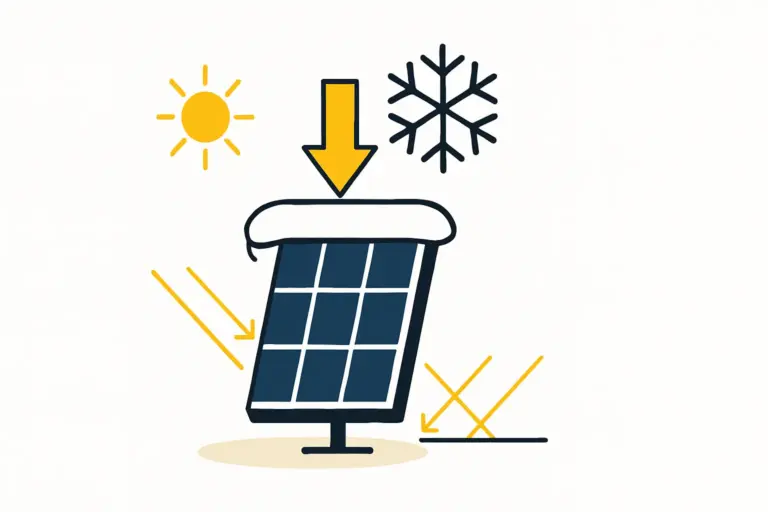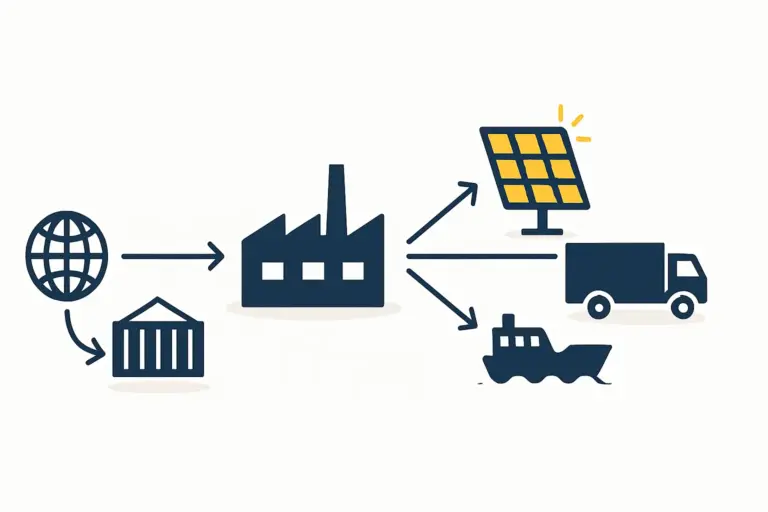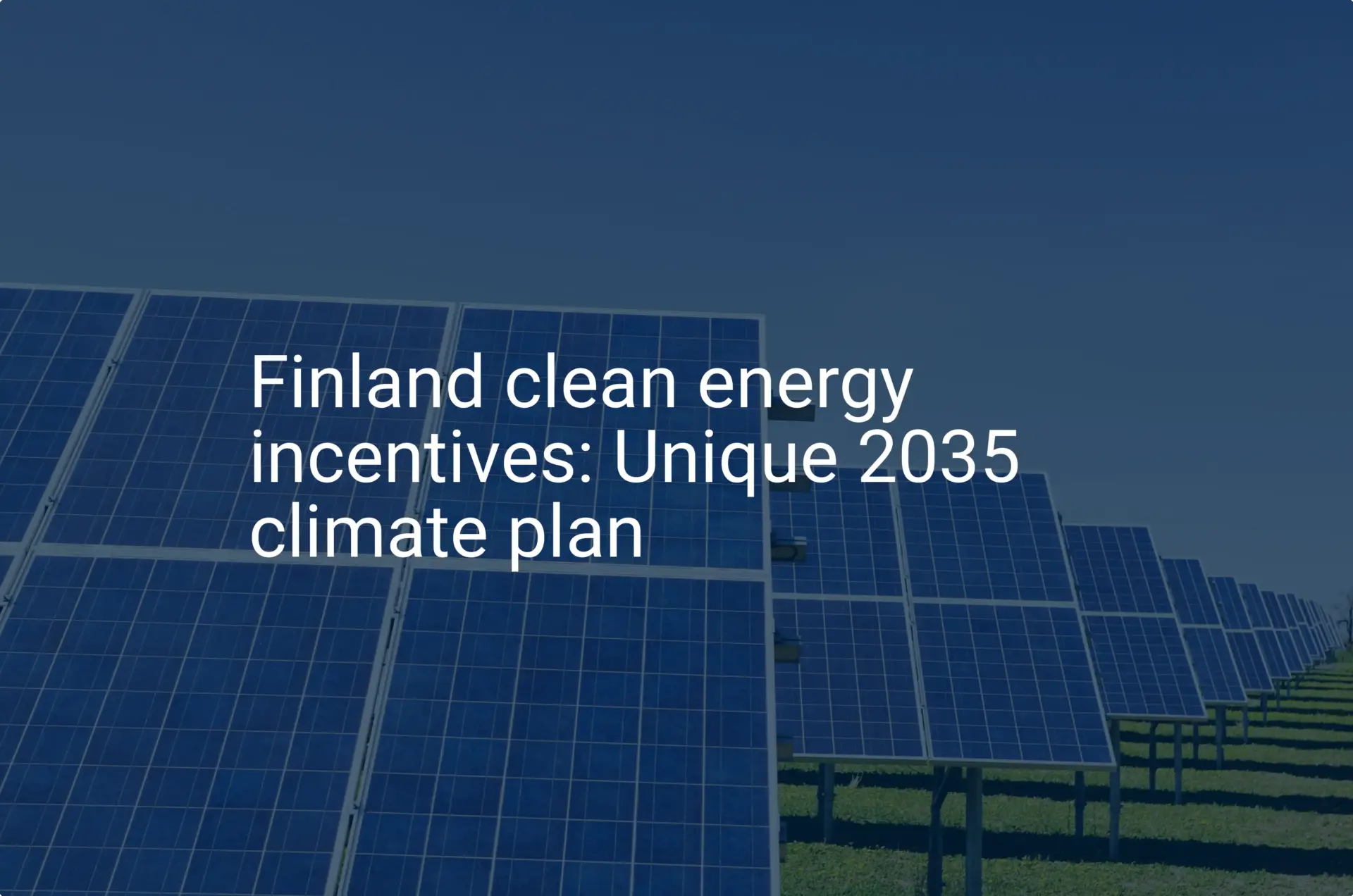An entrepreneur considering a new solar panel manufacturing venture often focuses on machinery, raw materials, and labor. However, in a market like Finland, an equally critical—and often overlooked—factor is the factory’s relationship with the electrical grid.
While Finland offers one of the world’s most stable power infrastructures, its dynamic energy pricing presents both a considerable operational cost and a strategic opportunity. Understanding the nuances of grid integration and energy cost management from the outset is not merely a technical detail; it is fundamental to a successful business plan. This article provides a clear overview of Finland’s grid system, the process for securing an industrial connection, and strategies for navigating its volatile energy market.
Understanding Finland’s Electrical Grid: A Foundation of Reliability
For any 24/7 manufacturing operation, grid stability is paramount. Unplanned downtime can halt production, damage sensitive equipment, and lead to significant financial losses. Here, Finland presents a highly attractive environment. The national grid, managed by the transmission system operator Fingrid, boasts an exceptional reliability rate of 99.9996%. This level of stability is among the highest globally, providing a secure foundation for energy-intensive industries.
A unique feature of the Finnish system is its decentralized structure. While Fingrid manages the high-voltage national backbone, regional and local distribution is handled by 77 different Distribution System Operators (DSOs).
A new factory, therefore, doesn’t interface with a single national utility but with the specific DSO responsible for its chosen geographical area. Each DSO has its own procedures and technical requirements, making the choice of location a critical early decision. This decentralized model ensures responsive local management and high standards of maintenance across the country, contributing to the grid’s overall resilience.

The Process of Securing an Industrial Grid Connection
Securing a high-capacity connection for a manufacturing plant is a structured process requiring careful planning and coordination with the local DSO. Business planners should anticipate a timeline of approximately 6 to 12 months from initial application to final commissioning.
The process typically involves the following steps:
-
Initial Inquiry and Application: The process begins by contacting the local DSO responsible for the area where the factory will be built. This step underscores why choosing the right factory location is such an essential early part of the project plan.
-
Technical Assessment: The DSO conducts a detailed study to determine the feasibility of the connection, assess the impact on the local network, and define the technical requirements for the new infrastructure.
-
Connection Offer: Based on the assessment, the DSO provides a formal offer outlining the scope of work, total costs, and a projected timeline.
-
Construction and Commissioning: Upon acceptance of the offer, the DSO and the factory’s contractors undertake the necessary construction of substations, power lines, and other infrastructure. This phase must be aligned with the factory’s overall construction schedule and building requirements.
The grid connection represents a significant capital expenditure. For a medium-sized solar factory requiring a connection of around 5 MW, costs can range from 200,000 to 500,000 euros. This figure can vary substantially based on the factory’s distance from existing grid infrastructure and the complexity of the required upgrades.

Navigating Finland’s Volatile Energy Market
While the grid is stable, Finland’s electricity prices are not. As part of the Nord Pool spot market, prices are determined by supply and demand and can change hourly. For industrial consumers, this volatility is a major driver of operational costs. Prices can swing dramatically, from negative figures during times of high renewable energy production to several hundred euros per megawatt-hour (MWh) during periods of peak consumption.
This price volatility is particularly pronounced during the winter months. Colder temperatures and reduced daylight lead to higher energy demand, coinciding with lower output from solar and, at times, wind power. This combination can result in sustained periods of high electricity costs, directly impacting a factory’s profitability. Since the energy consumption of solar panel production machinery is substantial, this exposure to price spikes is a critical business risk that must be actively managed.
Strategies for Managing Energy Costs and Ensuring Stability
A sophisticated approach to energy management can transform the challenge of volatile prices into a competitive advantage. Rather than being a passive consumer, a modern solar factory can implement strategies to control costs and even generate new revenue streams.
On-Site Solar Generation
A solar panel factory can, and should, use its own products. Installing a sizable solar array on the factory roof or adjacent land allows the facility to generate a portion of its own electricity. This directly reduces reliance on the grid, especially during sunny daytime hours when electricity prices may be high.
Battery Energy Storage Systems (BESS)
A BESS is a powerful tool for navigating a volatile market. The system can be programmed to charge its batteries when electricity prices are low or even negative, for instance, overnight or on windy weekends. This stored energy can then be discharged to power the factory during peak price hours, effectively insulating the operation from market spikes.
Demand Response Programs
Industrial consumers can participate in demand response programs. In these arrangements, the factory agrees to temporarily reduce its electricity consumption during moments of critical grid stress. In return for providing this grid-stabilizing service, the factory receives a payment from the grid operator. This not only lowers the overall energy bill but also creates an additional source of revenue.

Frequently Asked Questions (FAQ)
Who is the main regulatory body for energy in Finland?
The energy market in Finland is overseen by the Energy Authority (Energiavirasto), which ensures fair competition and regulates network operations.
Why can electricity prices become negative?
Negative prices occur when the supply of electricity, primarily from wind and solar power, exceeds demand. Producers must pay to offload their power onto the grid, creating an opportunity for large consumers with storage capacity to be paid for taking electricity.
Is the 6–12 month connection timeline a fixed period?
No, this is an average estimate. The actual time can be shorter or longer depending on the project’s complexity, the specific DSO’s current workload, and the extent of network upgrades required.
How does the decentralized grid affect the application process?
It means that all negotiations and technical planning must be conducted directly with the specific DSO that serves the chosen factory location. There is no single national entity for a distribution-level connection application.
Planning for Success: Integrating Energy into Your Business Model
Success in Finland’s solar manufacturing industry requires a holistic perspective. The country’s reliable grid provides an excellent operational backbone, but its market-driven energy pricing demands a proactive and strategic approach.
Integrating grid connection and energy management into the initial business case is essential for long-term success. By carefully selecting a location, budgeting for connection costs, and implementing modern energy management strategies like on-site generation and battery storage, an entrepreneur can build a resilient and cost-competitive operation. These considerations are a foundational element of a solid solar factory business plan. As outlined in the educational materials provided by pvknowhow.com, understanding these local technical and financial nuances is critical for launching a successful enterprise.






